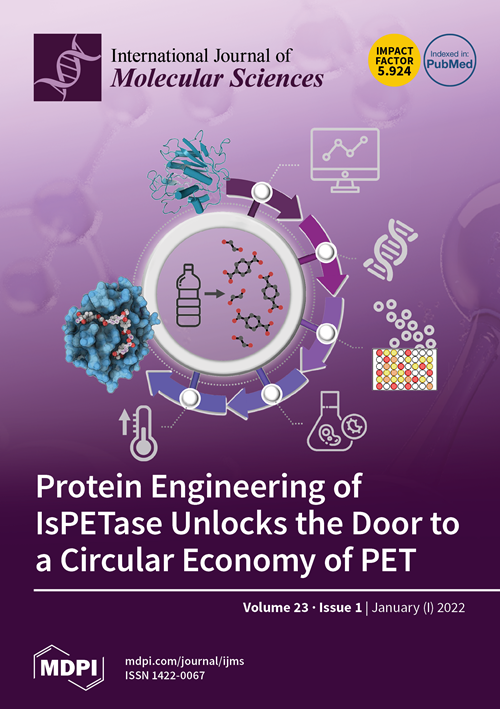综合多指标分析确定胰腺癌的免疫亚型
IF 4.9
2区 生物学
Q1 BIOCHEMISTRY & MOLECULAR BIOLOGY
引用次数: 0
摘要
基于相关信号通路基因组活性的改变而探索新型胰腺癌(PC)亚型或预后生物标志物的研究十分有限。在此,我们采用非负矩阵因式分解(NMF)方法,根据PC和正常样本中C7免疫学特征基因组的活性,确定了PC的三种免疫亚型。簇1是免疫炎症亚型,对免疫检查点阻断(ICB)的反应率较高,肿瘤免疫功能紊乱和排斥(TIDE)评分最低。第 2 组是免疫排斥亚型,与基质活化密切相关,表现为转化生长因子(TGF)-β、细胞粘附、细胞外基质重塑和上皮细胞向间质转化(EMT)相关基因的表达水平升高。群组3是免疫凋亡亚型,显示出有限的免疫活性。在预后预测方面,我们根据胰腺癌的四个免疫相关预后基因 RHOF、CEP250、TSC1 和 KIF20B,开发了免疫相关预后风险模型(IRPM)。IRPM显示出卓越的预后效果,并在外部队列中成功验证。值得注意的是,通过体外实验,预后模型中的关键基因 RHOF 对胰腺癌细胞的增殖、迁移和侵袭有显著影响。此外,我们还对不同IRPM风险评分的PC患者的体细胞突变图谱和免疫图谱进行了全面分析。我们的研究结果根据免疫微环境对患者进行了精确分层,并预测了免疫疗法的反应,为临床医生制定更具针对性的临床策略提供了宝贵的见解。本文章由计算机程序翻译,如有差异,请以英文原文为准。
An Integrated Multi-Omics Analysis Identifying Immune Subtypes of Pancreatic Cancer
Limited studies have explored novel pancreatic cancer (PC) subtypes or prognostic biomarkers based on the altered activity of relevant signaling pathway gene sets. Here, we employed non-negative matrix factorization (NMF) to identify three immune subtypes of PC based on C7 immunologic signature gene set activity in PC and normal samples. Cluster 1, the immune-inflamed subtype, showed a higher response rate to immune checkpoint blockade (ICB) and had the lowest tumor immune dysfunction and exclusion (TIDE) scores. Cluster 2, the immune-excluded subtype, exhibited strong associations with stromal activation, characterized by elevated expression levels of transforming growth factor (TGF)-β, cell adhesion, extracellular matrix remodeling, and epithelial-to-mesenchymal transition (EMT) related genes. Cluster 3, the immune-desert subtype, displayed limited immune activity. For prognostic prediction, we developed an immune-related prognostic risk model (IRPM) based on four immune-related prognostic genes in pancreatic cancer, RHOF, CEP250, TSC1, and KIF20B. The IRPM demonstrated excellent prognostic efficacy and successful validation in an external cohort. Notably, the key gene in the prognostic model, RHOF, exerted significant influence on the proliferation, migration, and invasion of pancreatic cancer cells through in vitro experiments. Furthermore, we conducted a comprehensive analysis of somatic mutational landscapes and immune landscapes in PC patients with different IRPM risk scores. Our findings accurately stratified patients based on their immune microenvironment and predicted immunotherapy responses, offering valuable insights for clinicians in developing more targeted clinical strategies.
求助全文
通过发布文献求助,成功后即可免费获取论文全文。
去求助
来源期刊

International Journal of Molecular Sciences
Chemistry-Organic Chemistry
CiteScore
8.10
自引率
10.70%
发文量
13472
审稿时长
17.49 days
期刊介绍:
The International Journal of Molecular Sciences (ISSN 1422-0067) provides an advanced forum for chemistry, molecular physics (chemical physics and physical chemistry) and molecular biology. It publishes research articles, reviews, communications and short notes. Our aim is to encourage scientists to publish their theoretical and experimental results in as much detail as possible. Therefore, there is no restriction on the length of the papers or the number of electronics supplementary files. For articles with computational results, the full experimental details must be provided so that the results can be reproduced. Electronic files regarding the full details of the calculation and experimental procedure, if unable to be published in a normal way, can be deposited as supplementary material (including animated pictures, videos, interactive Excel sheets, software executables and others).
 求助内容:
求助内容: 应助结果提醒方式:
应助结果提醒方式:


